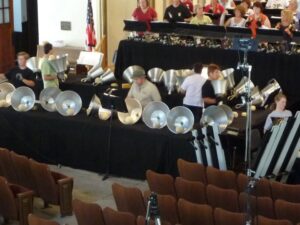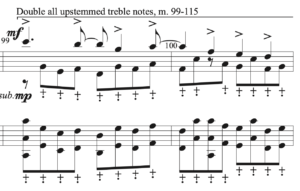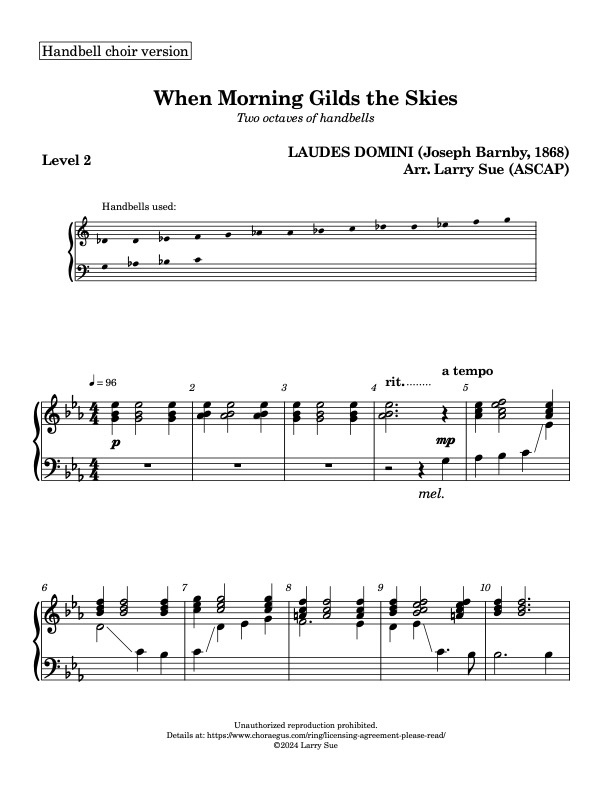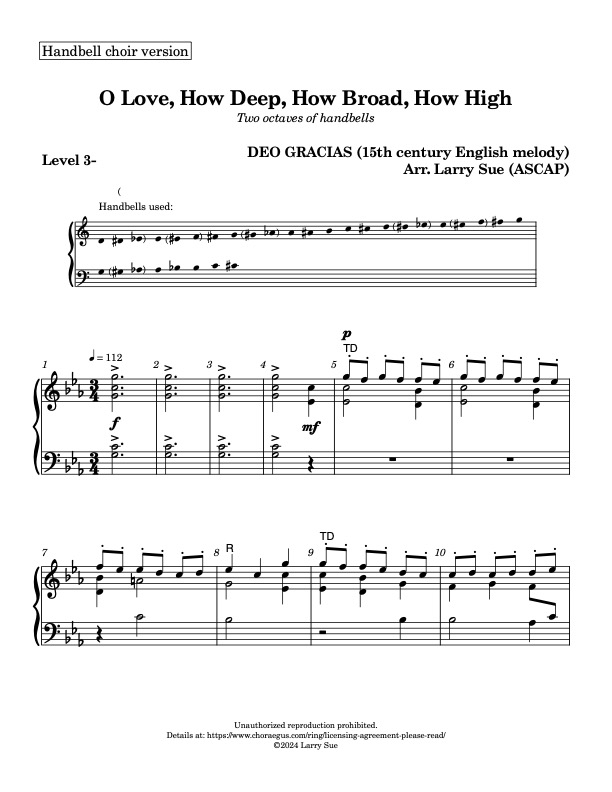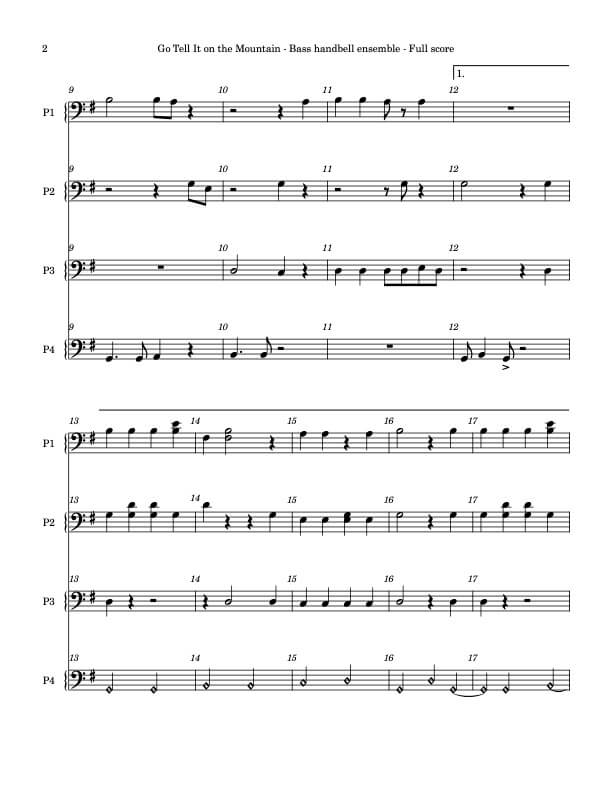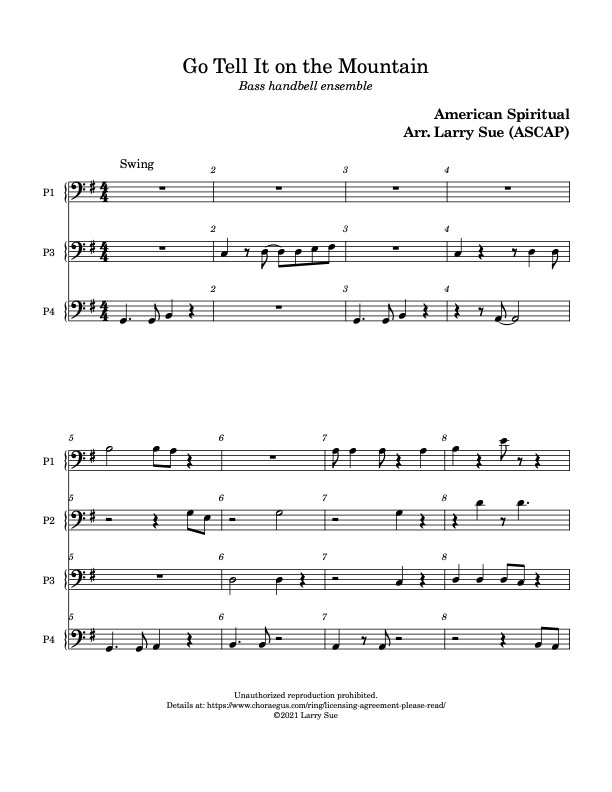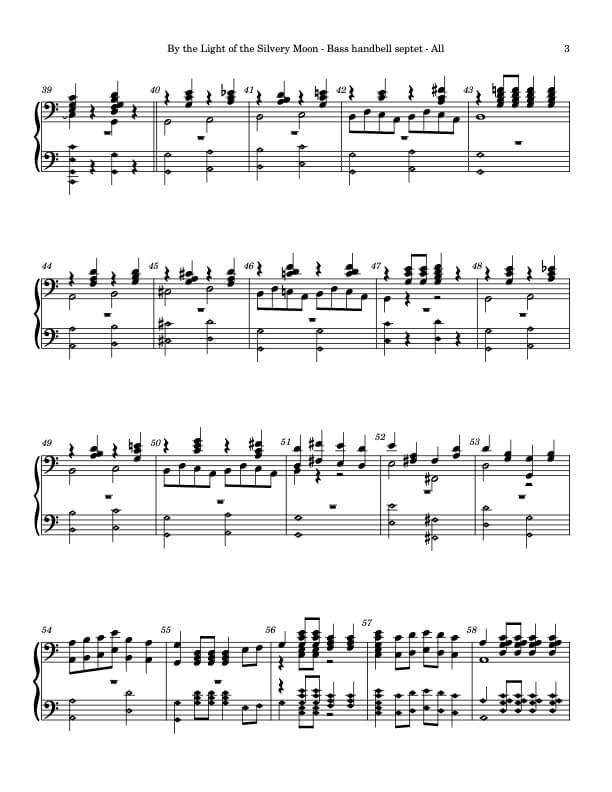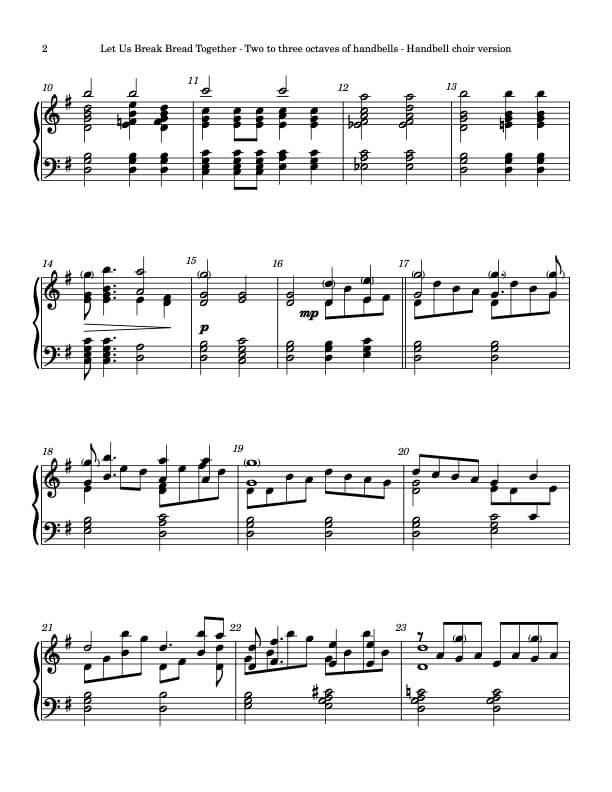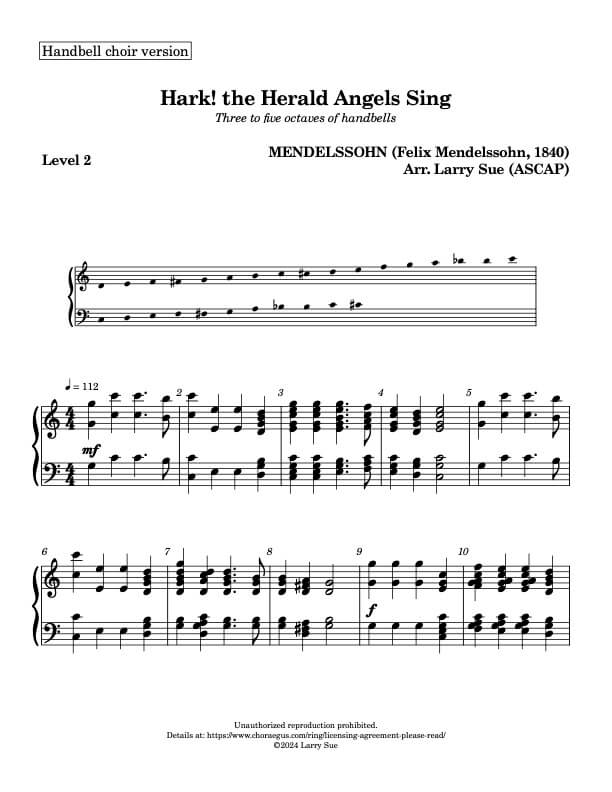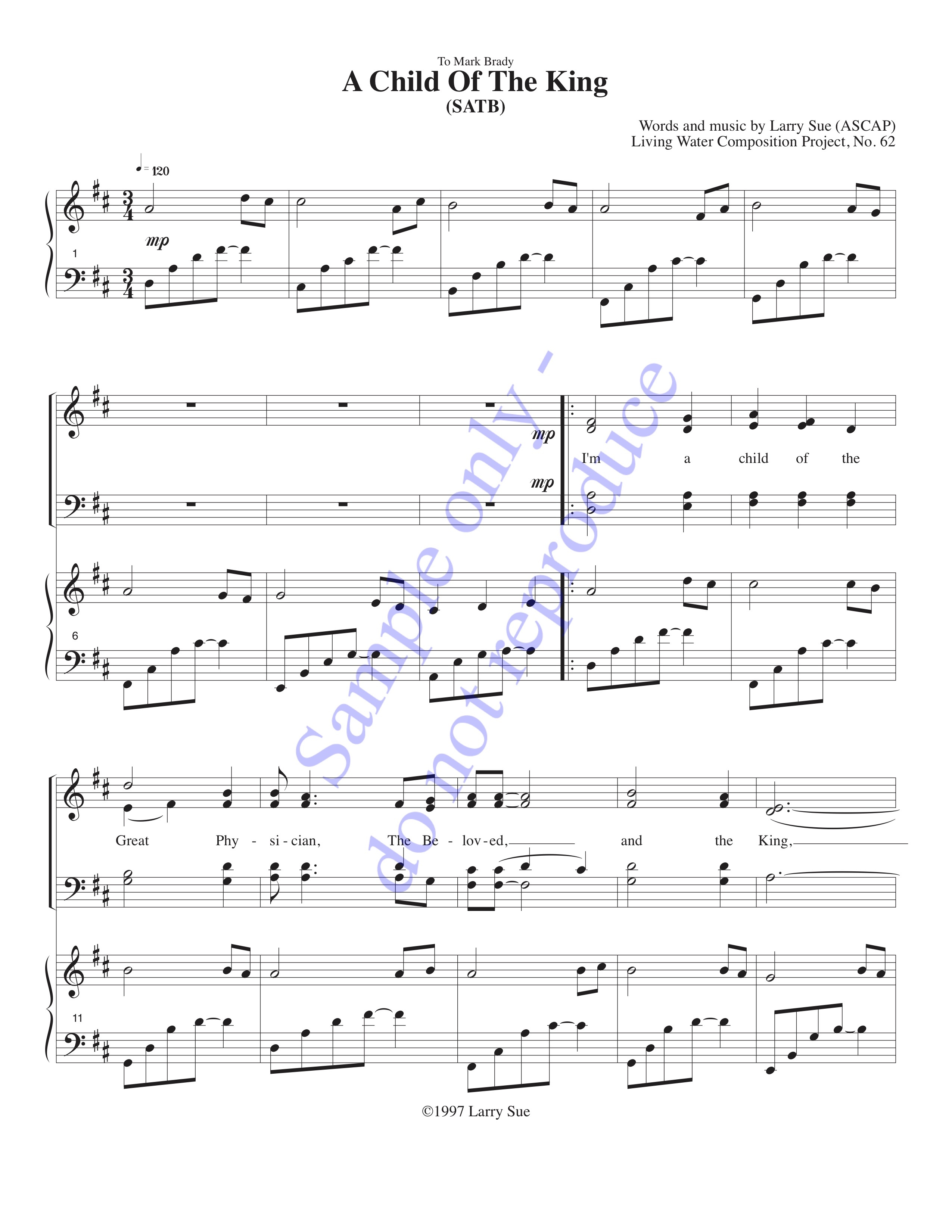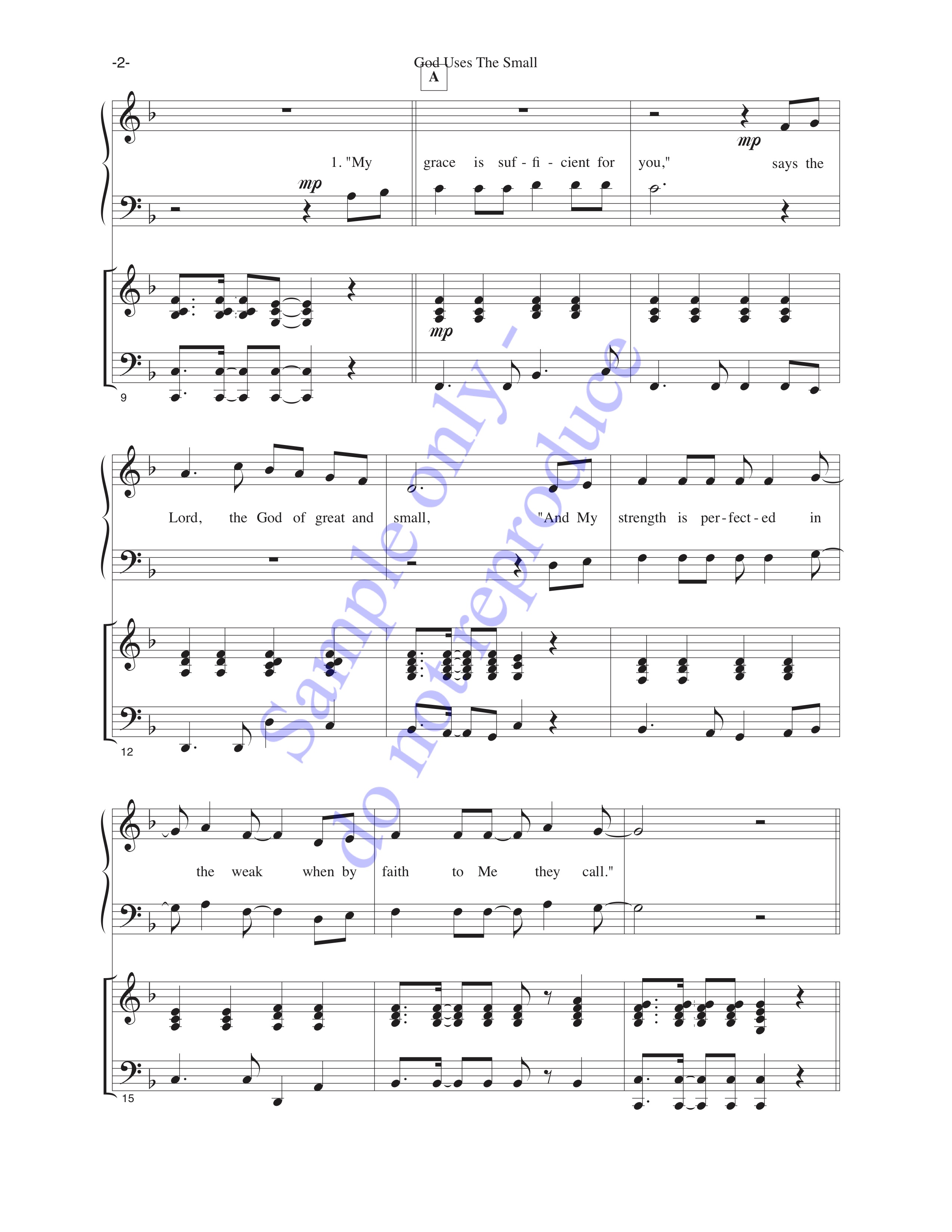Author's posts
Jun 24
A Sparrow on Christmas Morning (Handbells, 3 or 5 octaves, plus handchimes, 3 octaves, Level 3+)
Otto Kotilainen’s Finnish carol A Sparrow on Christmas Morning tells the story of a sparrow that has exhausted his summer food supply. In danger of starving in the winter cold, he visits a young girl who offers him a seed to eat. The sparrow gratefully accepts the offer, and then reveals that he, her deceased …
Jun 20
In what order should I hold my bells?
The question of how to configure four-in-hand bells (usually for eight-bell duets or twelve-bell trios) comes up every now and then. The mental effort required to manage four notes simultaneously dictates a need to make as much of that thinking as automatic as possible. One school of thought goes with the idea of holding the …
Jun 15
Oh, How I Love Jesus – for eight handbells
The tune OH, HOW I LOVE JESUS is a simple one; its composer is unknown. It’s been sung for quite a long time as a gentle expression of faith in Christ for young children and mature adults. We hope you’ll enjoy playing our arrangement for eight handbells! There is a name I love to hear, …
Jun 12
Home on the (Free) Range!
Home on the Range is an American cowboy song romanticizing life in the old West. You know… riding horses, herding cattle, sleeping under the stars, and sitting by the campfire at night. There are some of us who think about how much easier that would be than working in the big city with its manic …
Jun 11
Why do each of us hold our bells differently?
If you’ve watched our eight-bell videos, you may have noticed that Carla and I hold our handbells in different ways. The handbell terminology is that she’s using “British four-in-hand”, while I’m using “American four-in-hand”, which is also known as “ring and knock”. The difference will always be there, because we each are sticking with what …
Jun 06
New 3-octave Christmas music!
Handbell folks find it’s never too early to start thinking about what we’re going to play for the Christmas (technically, Advent + Christmas + Epiphany) season. The world around us associated handbells with Christmas, so we have to be ready to play in church, at Christmas parties, and even outdoor events such as parades. Today …
Jun 04
Our first US duet performance
Many of you know that Carla and I (Larry) were in a long-distance relationship between California and England for several years. After getting engaged in 2011, we worked on getting her a fiancée visa; it was approved in time for August 2012 to be the Month of One-Way Plane Tickets. I flew from California to …
May 31
New freebie: “Daisy Bell” for eight handbells!
Daisy Bell, also known as A Bicycle Built for Two, was written in the late nineteenth century by Harry Dacre. If you’re movie buff, you’ll probably remember that it was sung by Hal, the computer from 2001, A Space Odyssey. I remember learning it from my mom and grandmother. Most people I know sing only …
May 28
What does it mean to “specialize in bass handbell ringing”?
I’m a “bass ringing specialist”. The simple explanation of that phrase is that some people think that I’m reasonably proficient at ringing bass bells. I realize that still requires a bit of clarification, because the bass clef in modern handbell music tops out at C5 (which is written as a middle C on the handbell …
May 23
Why is handbell music notated an octave lower?
In case you didn’t already know, handbell music is notated an octave lower than the bells actually sound. For instance, the “middle C” that handbell ringers read really is the C that’s on the third space (counting upward) of the treble staff. The convention in place, however, is to name a particular note by its …

